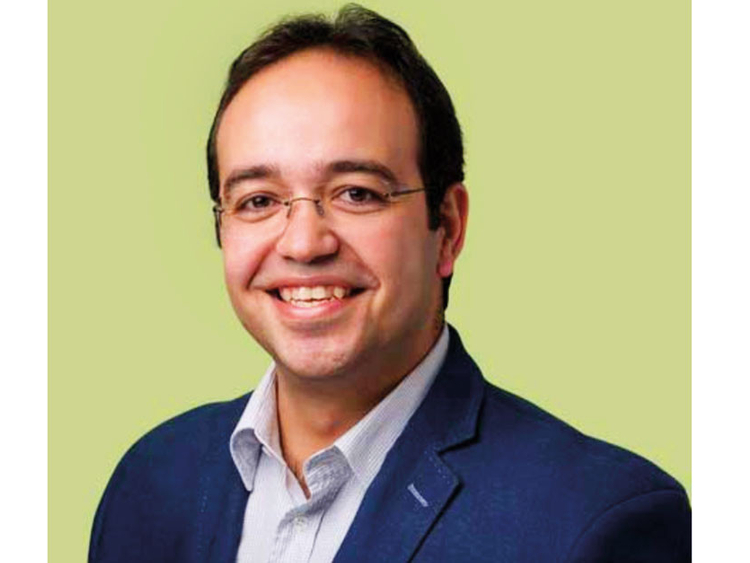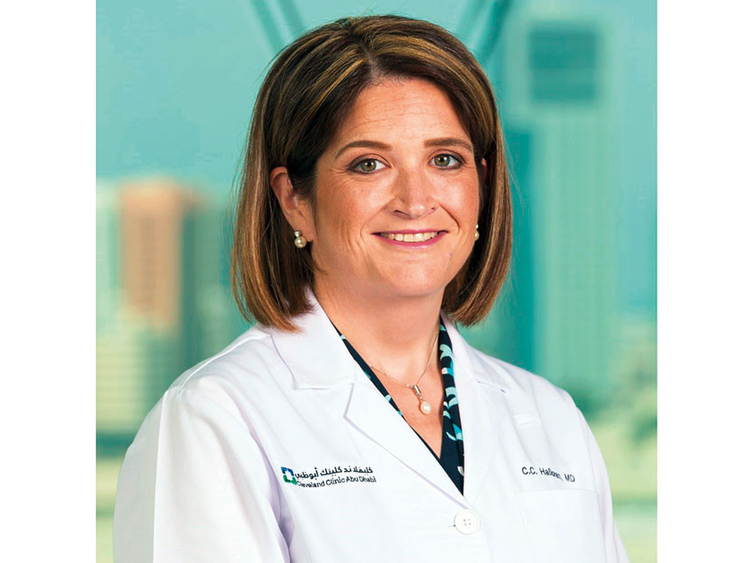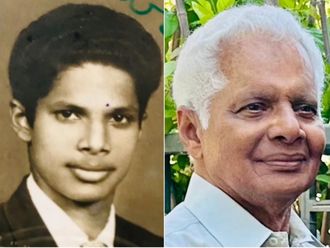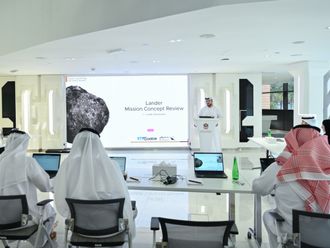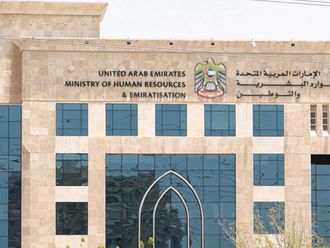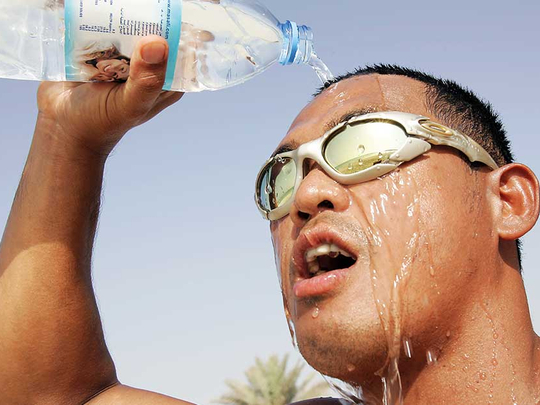
Abu Dhabi: With the mercury touching new highs in the UAE in the past few days, doctors are cautioning the public to guard against heat exhaustion and heat stroke.
As Dr Christian Halloran, chief of operations at the Emergency Medicine Institute at Cleveland Clinic Abu Dhabi, explained, “Heat illnesses are caused by overexposure to heat and the inability to properly regulate the body’s temperature as a result. The body first experiences heat exhaustion, which can lead to sweating, nausea and vomiting, thirst, fast heart rate, headache and dizziness. Heat stroke is a more severe condition that leads to high body temperature, rapid breathing and a change in mental status such as confusion or slurred speech. Heat stroke is a life-threatening emergency.”
Those that work or spend more time outdoors are more at risk. Dr Suresh K. Menon, specialist internal medicine at Aster Gardens Specialty Clinic, Discovery Gardens, said, “With the extreme summers we face in the UAE, heat exhaustion is rather common. It can occur to anybody from children to the elderly. We see numerous cases of heat stroke in blue collar workers and others who are out directly exposed to the sun during the peak hours. However, with the new labour work rules restricting open sun construction work in the UAE between 12.30pm and 3pm, the numbers have reduced.”
Symptoms
The symptoms of heat exhaustion should not be ignored. According to Dr Amr Elnaggar, specialist Emergency Medicine at Medcare Hospital Sharjah, “Heat cramps, fatigue and heat exhaustion are marked by muscle cramps followed by exhaustion and profuse sweating. The patient also experiences rapid pulse, rapid breathing, dizziness and headache. These symptoms may progress to heat stroke when the body temperature reaches 40 degrees Celsius in adults, 40.5 degrees Celsius in children, and the body stops sweating. The skin of a person is hot and dry, and sometimes becomes a reddish colour. It can also result in confusion, hallucinations, seizures, loss of consciousness, organ damage, coma and eventually death.”
He said the diagnosis is made by examining the patient’s symptoms and history of exposure to hot surroundings, and taking the core body temperature (rectal temperature). “Other tests are usually done to check electrolyte levels, urine studies for renal or liver damage and rhabdomyolysis (muscle breakdown). Tests such as chest X-ray, CT or MRI may also be required.” Dr Halloran said, “Immediate treatment includes placing the patient in a cool environment and removing all restrictive clothing. The patient can be immersed in cold water if possible. Alternatively, ice packs may be placed in the armpits and groin area as the helps to cool the body. Fluids may be given if the person is alert. 999 should be called immediately.”
According to Dr Menon, benzodiazepines are administered to prevent shivering. Often the patient is dehydrated so IV fluids are given. The goal is to reach a core temperature below 39 degrees Celsius. “Many people recover with little or no problems with quick and effective treatment. Some may become more sensitive to hot weather. Initial recovery takes about a couple of days in the hospital and longer, if organ damage is detected. Complete recovery from heat stroke and its effects on the internal organs may take two months to a year.”
Prevention is better than cure. Dr Hollaran said, “People should limit the amount of time they exercise in the heat and take frequent breaks and drink fluids. Light coloured, loose fitting clothing should be worn when outdoors.” Dr Elnaggar added: “They should carry accessories like sunglasses, umbrellas and hats and take rest at regular intervals if they need to be out in the sun.”


